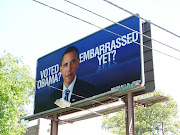By VANESSA HO
SEATTLEPI.COM STAFF
For more than 20 years, local heroin addicts have relied on a collection of needle exchanges for clean works. But in recent months, crack users too have quietly found an outlet in the city.
In a nondescript alley in the University District, users can pick up clean crack pipes, pipe filters and ascorbic acid for injecting crack. Heroin users can also pick up a drug that reverses a heroin overdose -- an apparent first for a city needle exchange.
"We take a different philosophy approach than most government institutions or public health departments. They have a budget, and have to pick and choose who they're going to help," said Shilo Murphy, executive director of the non-profit People's Harm Reduction Alliance, which runs the U-District needle exchange.
"We say this is our community, this is our neighborhood, and we should decide what we have at the table."
The exchange, which celebrated 20 years in the neighborhood this week, has come a long way from its roots -- when a man named Bob walked the Ave. and dispensed sterile needles from his backpack.
These days, the largely volunteer-driven exchange, which serves 400 to 600 people a month, is better known for branching ahead of its peers in the harm reduction world.
Public health officials know of no other local program that gives out crack kits or Naloxone, the heroin-overdose reversal drug. But they see the potential benefits.
Just as sterile syringes reduce the spread of HIV and other diseases, new and unbroken glass pipes are believed to prevent lip cuts and the spread of hepatitis strains. Rubber tips and new filters ward off mouth burns. Ascorbic acid helps prevent users from using lemon juice to dissolve cocaine rocks into an injectable liquid -- a common practice that can lead to fungal infections.
"Our program is primarily an HIV prevention program," said Michael Hanrahan, manager of education and prevention services of the HIV/STD program with Public Health -- Seattle & King County. The agency, which runs four exchange programs, has watched the demand for clean needles surge from 1.8 million in 2006 to nearly 3.4 million last year.
Hanrahan said research has documented HIV transmission from dirty needles, but he wasn't aware of rigorous studies showing disease spread via crack sores.
"But it's certainly theoretically plausible," he said. Last year, the Legislature passed a law allowing lay people to legally administer Naloxone, which counters the effects of an opioid overdose. Hanrahan said Public Health is interested in giving the drug to users, but because it is a prescription drug, the agency first needs to work on protocols with the state Board of Pharmacy.
At the People's Harm Reduction Alliance - partially comprised of former users who run a table at Northeast 43rd Street and University Avenue Northeast - there is less need to follow protocols and studies.
The program began giving out crack kits a few months ago, after staffers felt the need to support crack users, who still make up a major local drug trend, according to a recent University of Washington study.
And the exchange began giving out Naloxone soon after the new law took effect in June. Murphy estimated his program gives out two million needles a year and 10 pipes a day. This month, it handed out 25 vials of Naloxone.
"We don't have clients, we just have community members. I make it clear to everyone that everyone is family here," Murphy said.
"We believe all drug users should have the right to not get diseases and have the ability to prevent diseases."
Vanessa Ho can be reached at 206-448-8003 or vanessaho@seattlepi.com. Follow Vanessa on Twitter at twitter.com/vanessaho.

Custom Search
News
Monday, August 09, 2010
Subscribe to:
Post Comments (Atom)










No comments:
Post a Comment